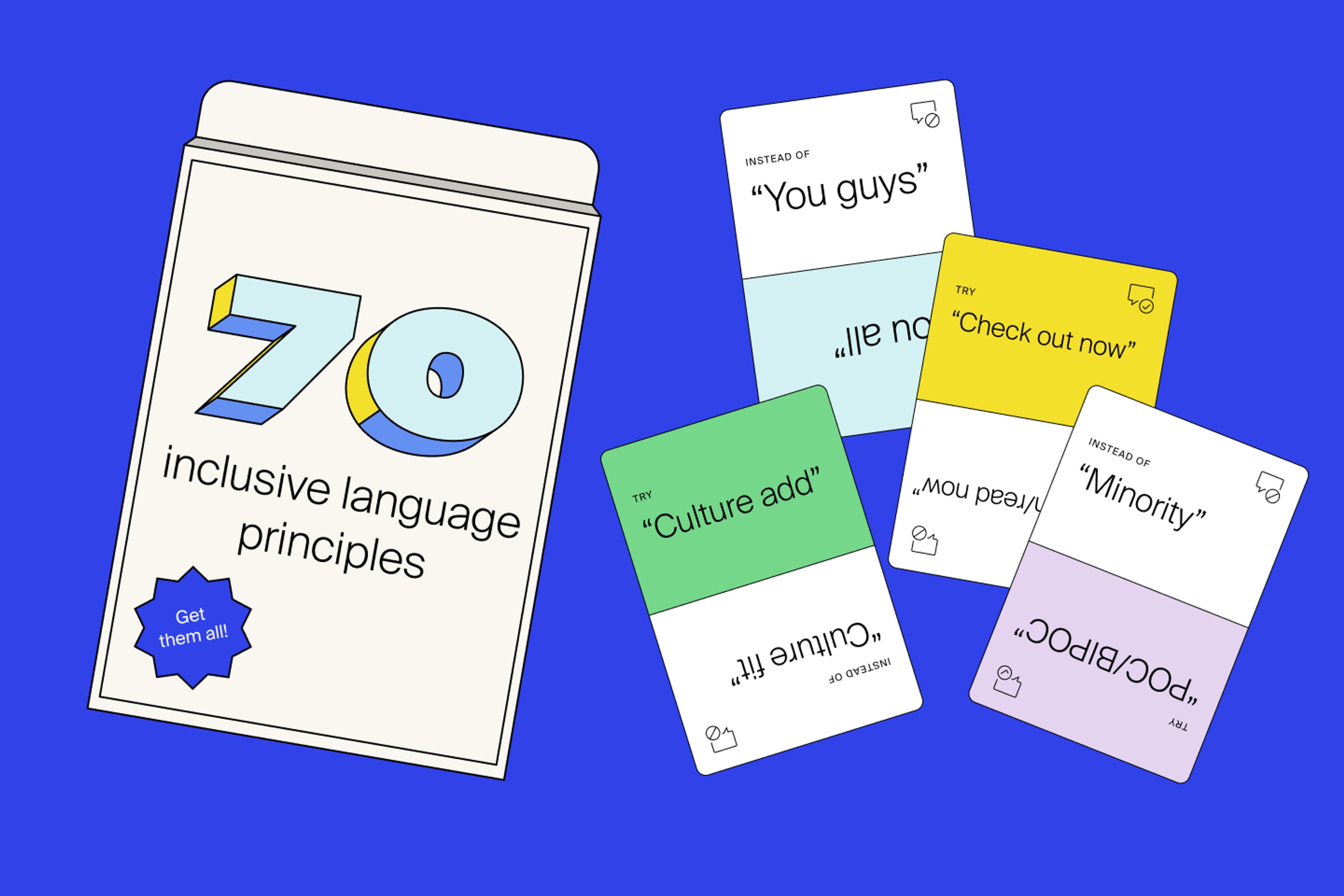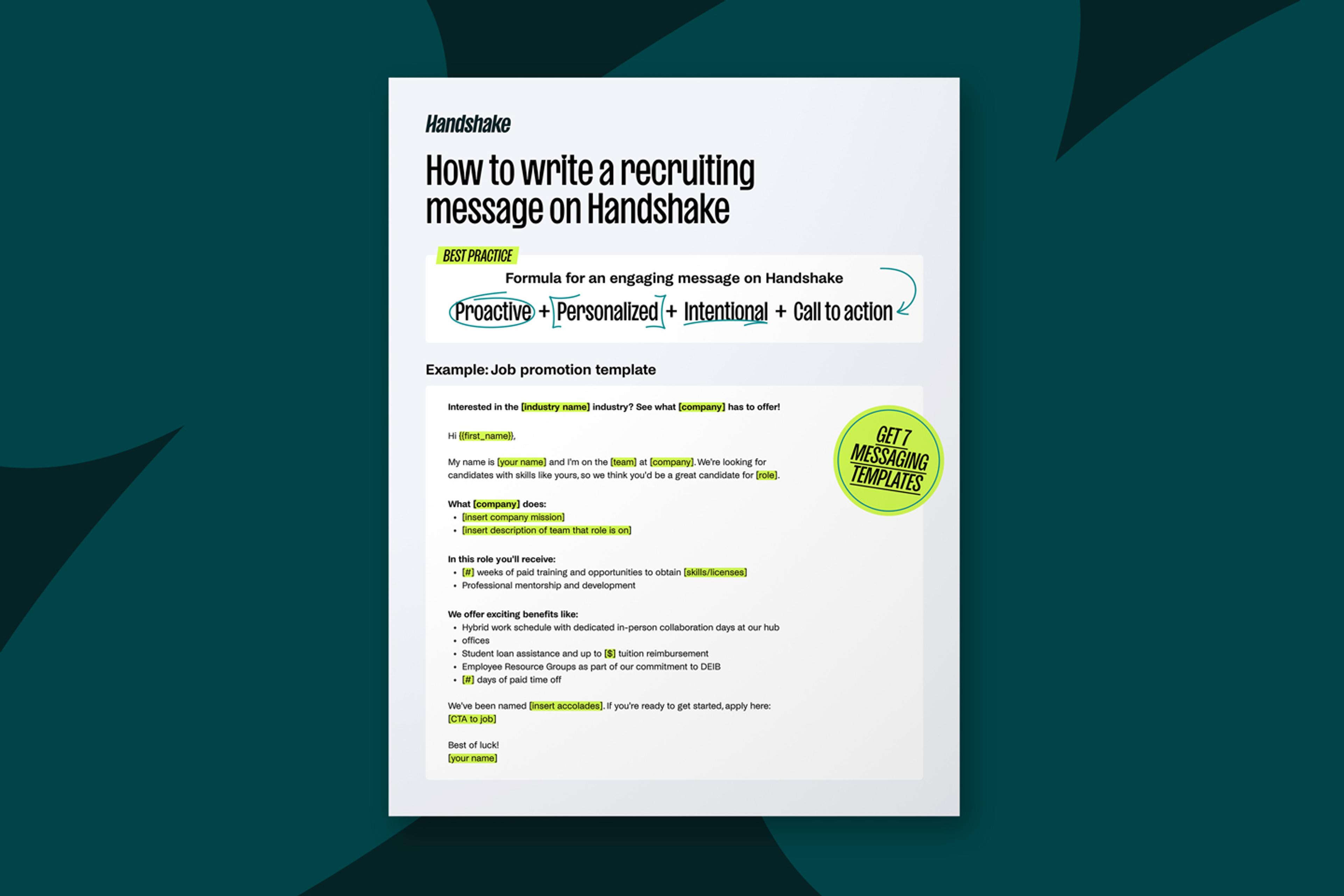Fall recruiting starts well before the autumn equinox on our calendars. But even if you're in the thick of student outreach and campus events, it's never too late to improve your tactics and measure your impact—and bring those learnings into your year-long planning process.
By knowing when, how, and why students are most likely to engage this fall, you can make sure you’re connecting with candidates and promoting open roles at the right time.
Polish your job postings
A job post is often a student’s first impression of your organization as an employer—and if it’s not approachable and informative, they’ll be much less likely to apply.
Desired skills, working hours, whether the role is remote or hybrid, and salary range are among the pieces of information students are most likely to say are “essential” to include in a job post.1 We’ve also seen that job posts that include salary details receive an average of 45% more qualified applicants.2

Do your job descriptions use inclusive language?
To attract candidates from a wider range of backgrounds and geographies, be sure to audit all job postings for inclusive language. Avoid industry jargon and keep descriptions and directions simple and clear.
Get more tipsBuild brand awareness on the Handshake feed as a key touchpoint
Students are 2.2X as likely to click on an employer message if they previously saw a post from that employer on the Handshake feed.3
Students often need to hear from an employer several times before they take the next step to apply to a job. An overwhelming majority of students (91%) say they'd be more likely to apply if they'd had multiple touch points with an employer—for example, receiving a message, meeting them at an event, and seeing their content on social media.4
Building up-funnel brand awareness on the feed—and getting in front of students earlier in their career discovery journey—means early talent can get to know you and take meaningful next steps to engage with you on Handshake.
How data-driven is your early talent recruiting?
Talk to Handshake and discover opportunities to prove your impact.
Maximize your messaging
Meaningful, measurable candidate touch points can also be complementary, creating a “snowball effect” for candidate engagement. Messaging is one touchpoint that plays a critical role in the end-to-end candidate experience, and can have a big impact on your recruiting funnel.
Handshake found that 70% of students are more likely to apply to a job if they receive a message from the employer.5 When employers promote events via messaging, they receive an average of 2.5 times as many RSVPs.6
What makes for a good message?
Character count is key. An analysis of millions of employer messages sent on Handshake shows that messages should be short—but not too short. About 300-350 characters is the sweet spot for maximizing click-through rates.7


Make messages as personal as possible
Handshake research shows personalization is the most important factor in getting students to reply to a message. Identify a specific group (e.g., students from a certain major or demographic) to target with each messaging campaign, and include specific information relevant to that group.
Get more tipsAchieve better results this fall
Since September and October see the most applications submitted, messages sent, and events attended by students and recent grads on Handshake, you need to maximize your impact in those two months if you want to hit your goals for the year.
To successfully execute on a data-driven recruiting strategy, you need the right tools. Employers using Handshake Talent Engagement Suite can get 6.5X as many qualified applicants as those using Handshake Basic. Get a demo and explore how Handshake data allows you to get more strategic with your early talent recruiting program…and get better results.
